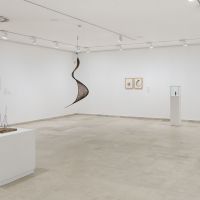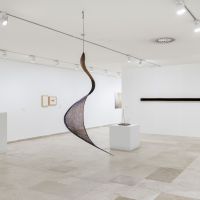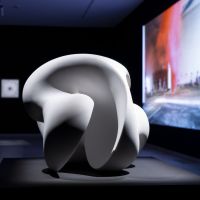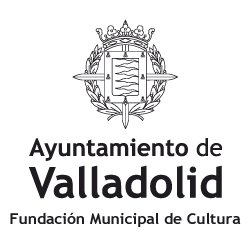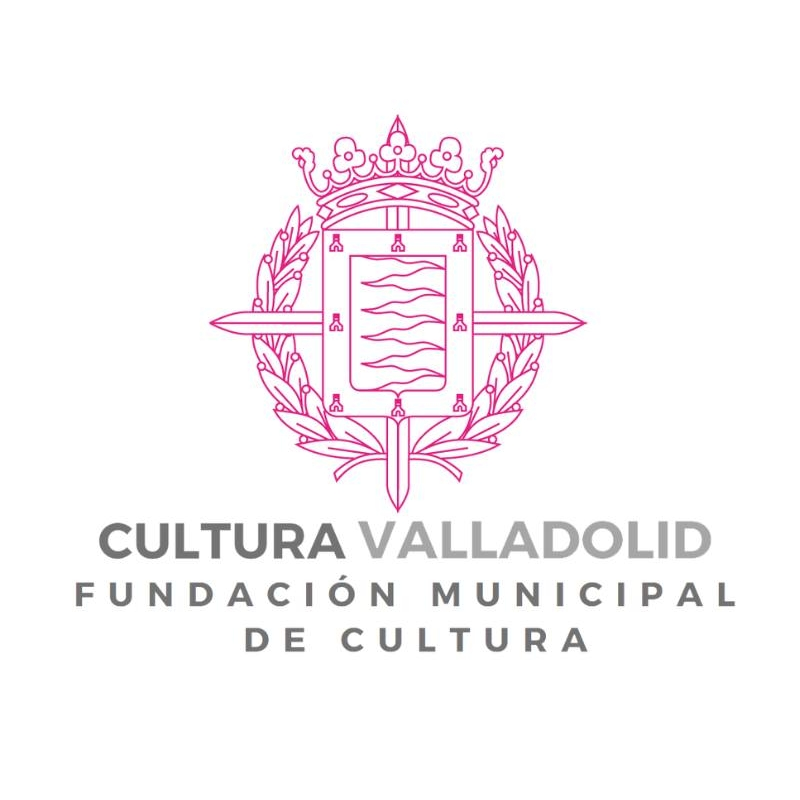Los visitantes asiduos recientemente se han asomado a formas diferentes de leer las obras de la AsociaciĂłn ColecciĂłn Arte ContemporĂĄneo. Lo han hecho desde la serie titulada Turno de rĂ©plica; tambiĂ©n desde la mirada a la escultura y la pintura contemporĂĄneas, como Una dimensiĂłn ulterior o Pintura. RenovaciĂłn permanente, pretextos mĂĄs o menos fĂ©rreos, mĂĄs o menos dĂșctiles. Si en los Ășltimos montajes de la colecciĂłn han predominado las miradas al arte de vanguardia y sus posibles relecturas, Universo Ferrant o Vanguardia y destino, en esta ocasiĂłn son, por lo general, obras mĂĄs recientes, todas ellas pertenecientes a la ColecciĂłn, sin âpresencias forĂĄneasâ, las que protagonizarĂĄn nuestro proyecto.Â
Uno de los primeros impulsos al realizar esta exposiciĂłn fue el de acudir a obras fundamentales en el contexto de la ACAC. Es por esto que surgiĂł la idea de la âsensaciĂłnâ como hilo conductor que se impusiera sobre concepto alguno, de modo que todo pudiera fraguarse a partir de insinuaciones, resonancias, ecos, sugerenciasâŠÂ La exposiciĂłn se entiende por tanto como un espacio de convivencia, un escenario en el que puedan darse connivencias fortuitas. Pero el proceso nos ha traĂdo a una situaciĂłn paradĂłjica. Querer ser llevados por la fuerza de una sensaciĂłn ha derivado en la constancia de que, por mucho que no queramos contar, es imposible no decir nada. A la luz del dispositivo al que nos enfrentamos, tendemos a preguntarnos, como en muchas canciones pop, si lo que se planteĂł primero fue una melodĂa o un texto, y el modo en que una y otro logran deslizarse hacia el fin deseado. Y descendiendo a un lenguaje mĂĄs coloquial, como quien se pregunta si la verdad puede desmontar una buena historia, Âżpuede o debe el relato, o cualquier otra verdad, condicionar una escena, un montaje? ÂżNo es excesivo, en definitiva, el valor que se le tiende a adjudicar a la narraciĂłn? Estas son las preguntan que pretende hacer aflorar nuestra exposiciĂłn.
Es solo una sensaciĂłn [Itâs Just a Feeling] is an exhibition in which the Patio Herreriano Museum celebrates the anniversary of a momentous event in the recent history of culture in the city of Valladolid. In 2000, Valladolid City Council and the Contemporary Art Collection Association (ACAC in Spanish) signed an agreement whereby the collection would be housed in our city. The museum opened its doors in 2002, and today the Patio Herreriano and the ACAC are still providing their visitors with exhibitions featuring pieces from this significant collection.
Regular visitors have recently been introduced to different ways of interpreting the pieces in the Contemporary Art Collection Association. They have done so through the series entitled Turno de rĂ©plica [Question Time]; and also via a look at contemporary sculpture and painting, such as Una dimensiĂłn ulterior [A Further Dimension] and Pintura. RenovaciĂłn permanente [Painting. Ongoing Renovation], pretexts that are more or less rigid and more or less flexible. While the latest exhibitions of the collection have focused on avant-garde art and its possible reinterpretations, such as Universo Ferrant [Ferrant Universe] and Vanguardia y destino [Avant-garde and Destiny], on this occasion it is generally more recent pieces that feature in our project. All of them belong to the Collection â there is no âforeign presenceâ.
One of the initial driving forces behind this exhibition was to draw on fundamental pieces within the context of the ACAC. This is how the idea of âfeelingâ emerged as the guiding thread that would prevail over any other concept, so that everything could be forged from insinuations, resonances, echoes, suggestions... The exhibition is therefore understood as a space for coexistence, a stage on which fortuitous collusions might occur. And yet the process has brought us to a paradoxical situation â wishing to be carried away by the force of a feeling has led to the realisation that, no matter how much we donât want to talk about it, it is impossible not to say something. In light of the device we are faced with, we tend to ask ourselves, as in many pop songs, whether what was first proposed was the tune or the text, and how both manage to slide towards the desired end. Using more colloquial language, like someone who wonders if the truth can dismantle a good story, can or should the story, or any other truth, condition a scene or a montage? In short, isnât the value that tends to be attributed to narration somewhat excessive? These are the questions that our exhibition aims to raise.



